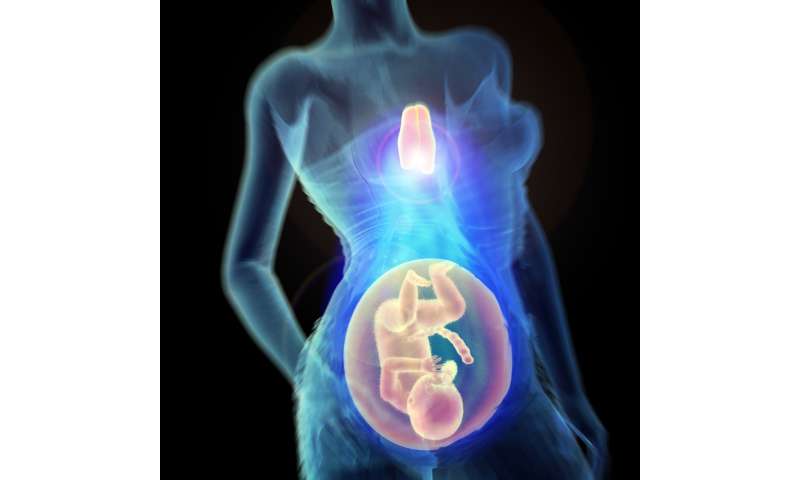
An international research team led by the University of British Columbia (UBC) has uncovered for the first time the importance of a small gland tucked behind the sternum that works to prevent miscarriage and diabetes in pregnant women.
The organ in question is the thymus, identified in a study published today in the journal Nature as playing a significant role in both metabolic control and immunity in pregnancy.
How the immune system adapts to support mother and fetus has puzzled researchers for decades. The study—conducted by an international research team, including UBC’s Dr. Josef Penninger—reveals an answer. The researchers have found that female sex hormones instruct important changes in the thymus, a central organ of the immune system, to produce specialized cells called Tregs to deal with physiological changes that arise in pregnancy.
The researchers also identified RANK, a receptor expressed in a part of the thymus called the epithelium, as the key molecule behind this mechanism.
“We knew RANK was expressed in the thymus, but its role in pregnancy was unknown,” says the study’s senior author Dr. Penninger, professor in the department of medical genetics and director of the Life Sciences Institute at UBC.
To get a better understanding, the authors studied mice where RANK had been deleted from the thymus.
“The absence of RANK prevented the production of Tregs in the thymus during pregnancy. That resulted in less Tregs in the placentas, leading to elevated rates of miscarriage,” says the study’s lead author Dr. Magdalena Paolino, assistant professor in the department of medicine at the Karolinska Institutet.
The findings also offer new molecular insights into the development of diabetes during pregnancy, known as gestational diabetes, a disease that affects approximately 15 percent of women in pregnancy worldwide, and about which scientists still know little.
In healthy pregnancies, the researchers found that Tregs migrated to the mother’s fat tissue to prevent inflammation and help control glucose levels in the body. Pregnant mice lacking RANK had high levels of glucose and insulin in their blood and many other indicators of gestational diabetes, including larger-than-average young.
“Similar to babies of women with diabetes in pregnancy, the newborn pups were much heavier than average,” says Dr. Paolino.
The deficiency of Tregs during pregnancy also resulted in long-lasting, transgenerational effects on the offspring. The pups remained prone to diabetes and overweight throughout their life spans. Giving the RANK-deficient mice thymus-derived Tregs isolated from normal pregnancies reversed all their health issues, including miscarriage and maternal glucose levels, and also normalized the body weights of the pups.
The researchers also analyzed women with diabetes in pregnancy, revealing a reduced number of Tregs in their placentas, similar to the study on mice.
“The discovery of this new mechanism underlying gestational diabetes potentially offers new therapeutic targets for mother and fetus in the future,” says co-author Dr. Alexandra Kautzky-Willer, a clinician-researcher based at the Medical University of Vienna.
“The thymus changes massively during pregnancy and how such rewiring of an entire tissue contributes to a healthy pregnancy has been one of the remaining mysteries of immunology,” adds Dr. Penninger. “Our work over many years has now not only solved this puzzle—pregnancy hormones rewire the thymus via RANK—but uncovered a new paradigm for its function: the thymus not only changes the immune system of the mother so it does not reject the fetus, but the thymus also controls metabolic health of the mother.
“This research changes our view of the thymus as an active and dynamic organ required to safeguard pregnancies,” says Dr. Penninger.
University of British Columbia

